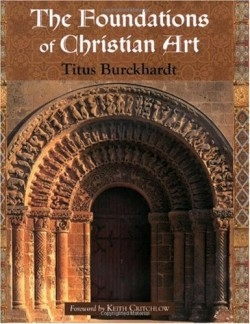The Foundations of Christian Art
Illustrated
Many authorities label any artwork that has a religious subject “sacred art,” but Titus Burckhardt is different. He posits that art is essentially form, and if the form is borrowed from some type of profane art, the spiritual vision of sacred art is lost.
German Swiss Titus Burckhardt (1908-1984) has been considered a renowned expert of sacred art, dedicating his life to the study of wisdom and tradition, not only in Christianity, but also in Islam. A member of the traditionalist school of thought, he was the artistic director of the Urs Graf Publishing House of Lausanne and Olten, which published illuminated manuscripts. He was also commissioned by UNESCO to inventory the architectural heritage of Fez. This most recent book compiles various articles which exemplify the author’s unique ideas, illustrated by his discussions of illuminated manuscripts, icons, and Renaissance art.
The author submits that in the first one and a half millennia of Christianity, anyone making an object, every member of a craft guild, was creating a work of art. Every sacred art piece is founded on a science of forms, on the symbolism inherent in forms. Therefore, since the divine image is found in the mortal form of Jesus, Christian art has only one purpose: to transfigure humankind and its world by its participation in Christ.
The author extensively examines illuminated manuscripts, addressing how the forms would have been meaningful to monks. Although so many pages overflow with a treasury of ornamentation, the creation of beauty would not have been the primary goal of the illuminator. For in an “archaic” culture, that is, one still in close contact with nature, every abstract form corresponded to a name and its meaning. Examples of such meaningful form can be witnessed in the famous Book of Kells, as well as the early Northumbrian manuscripts, the Lindisfarne Gospels, mozarabic illuminations, and other documents.
Burckhardt also demonstrates how early Christian icons are believed to have originated both miraculously and historically, thus resulting in their authenticity. One of the most significant sacred iconographic examples is the acheiropoietos, the “not made by human hands,” image of Christ. Many believe that Christ fashioned this image on fabric for the King of Edessa. Another iconographic example is the Virgin’s image found in various Byzantine copies, which has been credited to St. Luke. To Burckhardt, the legitimacy of Christ’s characteristic portrayal is confirmed by a thousand years of Christian art, “…for unless reality is denied to everything of that order, it must be admitted that the Spirit present in the tradition as a whole would soon have eliminated a false physical representation of the Savior.” Different looking representations of Christ found on Roman sarcophagi must be ignored, since they predate the Christian tradition, while those from the Renaissance should be excluded since they have ventured out of that tradition.
Whereas the iconographer basically created a static piece with holy subjects determining its form, the Renaissance artist was allowed to express his unique genius by means of biblical characters. However, Burckhardt views Renaissance artwork as “profane” and “decadent,” maintaining that a spiritually important piece of art should not be a work of individual genius; instead, the authenticity of Christian art is assured by its prototypes. Rather than the spiritual focus found in illuminated manuscripts and icons, Renaissance art projected an individual’s world view.
With his dismissal of Renaissance art, does Burckhardt find it conceivable that true Christian art can ever be revived? Pessimistically, he laments, “Christian art will not be reborn unless it completely frees itself from individualistic relativism, and returns to the sources of its inspiration, which by definition are situated in the timeless.” Such a discouraging look at the future of sacred Christian art is troubling, and the author fails to provide any concrete suggestions as to how to actually put aside present-day relativism.
Since it is a collection of articles, rather than written as a complete unit, the book is somewhat disjointed. Such a lack of chapter continuity does not help readers in handling the author’s already dense, scholarly style. Nonetheless, the time spent in these pages is well worth the effort, since persistent readers are rewarded with thoughtful and novel ideas about early Christian art. Furthermore, the 120 color illustrations are most instructive and bolster Burckhardt’s arguments. Not an art guide filled with quick facts, this book is fascinating for readers who want to delve seriously into one man’s passionate and intelligent theories about the origins of an important period in art history.
Reviewed by
Beth Hemke Shapiro
Disclosure: This article is not an endorsement, but a review. The publisher of this book provided free copies of the book to have their book reviewed by a professional reviewer. No fee was paid by the publisher for this review. Foreword Reviews only recommends books that we love. Foreword Magazine, Inc. is disclosing this in accordance with the Federal Trade Commission’s 16 CFR, Part 255.

